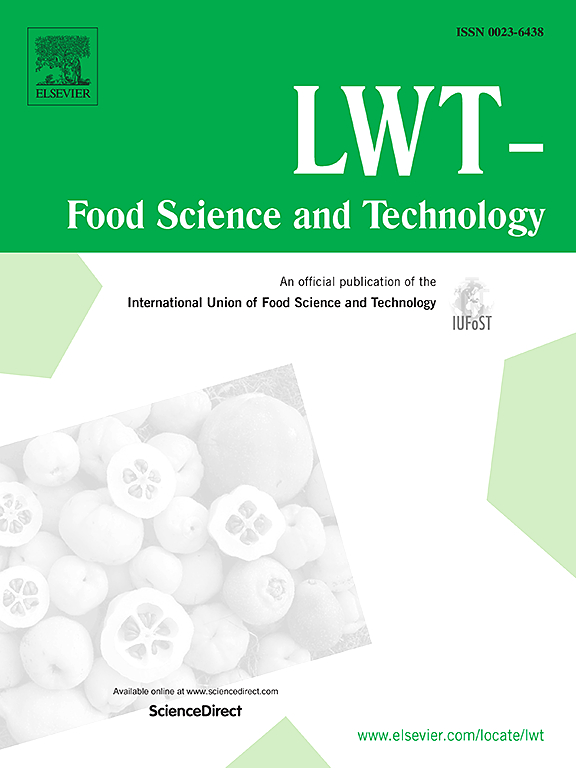Comprehensive analysis of rheological, tribological, and sensory properties of non-dairy low-fat coffee creamers
IF 6.6
1区 农林科学
Q1 FOOD SCIENCE & TECHNOLOGY
引用次数: 0
Abstract
This study aimed to improve the sensory attributes of low-fat non-dairy coffee creamer using a natural and indigenous thickener/fat replacer, namely cress seed gum (CSG). To achieve this objective, we assessed the characteristics of samples with varying levels of fat reduction (0%, 10%, 20%, and 30%) through rheological, tribological, and sensory evaluation methods. The sensory attributes examined included creaminess, thickness, mouth coating, dairy taste, dairy smell, and aftertaste. The findings revealed that incorporating CSG in the creamer formulation allowed for a reduction in fat content of up to 30% while maintaining similar sensory properties and a higher viscosity (0.79 for 0% fat reduction to 0.78 for 30% fat reduction) compared to the commercial variant. The friction coefficient at a speed of 100 mm/s increased as fat content decreased, and it exhibited an upward trend in the elastohydrodynamic zone with fat reduction. The correlation indicated that viscosity and friction coefficient at different speeds could affect the perceived creaminess. This led to the suggestion of a new experimental creaminess model, an improved version of Kokini's model for liquid systems. Overall, the study suggests that the non-dairy coffee creamer enriched with CSG has the potential to reduce fat by 30% and produce a healthier coffee creamer.
非乳制品低脂咖啡奶精流变学、摩擦学和感官特性的综合分析
本研究旨在使用天然的土生植物籽胶(CSG)作为增稠剂/脂肪替代品,改善低脂无乳咖啡奶精的感官特性。为了实现这一目标,我们通过流变学、摩擦学和感官评估方法评估了不同脂肪减少水平(0%、10%、20%和30%)的样品的特性。检查的感官属性包括乳脂度,厚度,口腔涂层,乳制品味道,乳制品气味和回味。研究结果显示,与商业变体相比,在奶精配方中加入CSG可以减少高达30%的脂肪含量,同时保持相似的感官特性和更高的粘度(脂肪减少0%为0.79,脂肪减少30%为0.78)。在100 mm/s速度下,摩擦系数随脂肪含量的降低而增大,在弹流动力区,摩擦系数随脂肪含量的降低呈上升趋势。相关关系表明,不同速度下的粘度和摩擦系数会影响感知到的乳脂度。这导致了一种新的实验奶油模型的提出,这是Kokini液体系统模型的改进版本。总的来说,该研究表明,富含CSG的非乳制品咖啡奶精有可能减少30%的脂肪,并生产出更健康的咖啡奶精。
本文章由计算机程序翻译,如有差异,请以英文原文为准。
求助全文
约1分钟内获得全文
求助全文
来源期刊

LWT - Food Science and Technology
工程技术-食品科技
CiteScore
11.80
自引率
6.70%
发文量
1724
审稿时长
65 days
期刊介绍:
LWT - Food Science and Technology is an international journal that publishes innovative papers in the fields of food chemistry, biochemistry, microbiology, technology and nutrition. The work described should be innovative either in the approach or in the methods used. The significance of the results either for the science community or for the food industry must also be specified. Contributions written in English are welcomed in the form of review articles, short reviews, research papers, and research notes. Papers featuring animal trials and cell cultures are outside the scope of the journal and will not be considered for publication.
 求助内容:
求助内容: 应助结果提醒方式:
应助结果提醒方式:


